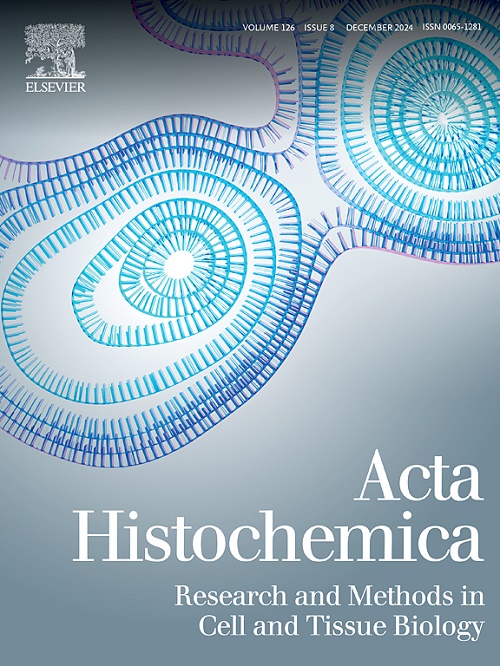Blood transfusion mediated tumor microenvironment remodeling in breast cancer
IF 2.4
4区 生物学
Q4 CELL BIOLOGY
引用次数: 0
Abstract
Blood transfusions play a critical role in breast cancer management, particularly in addressing perioperative blood loss and chemotherapy-induced anemia. However, emerging evidence suggests that transfusions may adversely affect oncologic outcomes by inducing transfusion-related immunomodulation (TRIM) and altering the tumor microenvironment (TME). TRIM suppresses cytotoxic immune responses, potentially facilitating tumor progression—especially in aggressive subtypes such as triple-negative breast cancer (TNBC) and HER2-positive cancers. Additionally, transfusions can paradoxically exacerbate tumor hypoxia by increasing blood viscosity and impairing microvascular perfusion, thereby reducing the effectiveness of chemotherapy, radiotherapy, and immunotherapy. This review examines the dual role of blood transfusions in breast cancer, emphasizing both their clinical benefits and potential risks. We analyze their impact on treatment resistance and tumor progression and discuss strategies to mitigate associated risks, including leukoreduction, erythropoiesis-stimulating agents (ESAs), intravenous iron supplementation, and blood conservation techniques. Furthermore, we highlight the importance of personalized transfusion approaches guided by tumor subtype, immune status, and relevant biomarkers such as tumor-infiltrating lymphocytes (TILs), PD-L1 expression, and circulating tumor DNA (ctDNA). Future research should focus on optimizing transfusion timing, implementing biomarker-driven protocols, and developing immune-modulating interventions to counteract TRIM. A personalized, evidence-based transfusion strategy may ultimately enhance treatment efficacy and improve long-term outcomes in breast cancer care.
输血介导的乳腺癌肿瘤微环境重塑
输血在乳腺癌治疗中起着至关重要的作用,特别是在处理围手术期失血和化疗引起的贫血方面。然而,新出现的证据表明,输血可能通过诱导输血相关免疫调节(TRIM)和改变肿瘤微环境(TME)对肿瘤预后产生不利影响。TRIM抑制细胞毒性免疫反应,潜在地促进肿瘤进展-特别是在侵袭性亚型,如三阴性乳腺癌(TNBC)和her2阳性癌症中。此外,输血可能通过增加血液粘度和损害微血管灌注而矛盾地加剧肿瘤缺氧,从而降低化疗、放疗和免疫治疗的有效性。这篇综述探讨了输血在乳腺癌中的双重作用,强调了其临床益处和潜在风险。我们分析了它们对治疗耐药和肿瘤进展的影响,并讨论了减轻相关风险的策略,包括白细胞减少、促红细胞生成剂(esa)、静脉补铁和血液保存技术。此外,我们强调了根据肿瘤亚型、免疫状态和相关生物标志物(如肿瘤浸润淋巴细胞(TILs)、PD-L1表达和循环肿瘤DNA (ctDNA))指导的个性化输血方法的重要性。未来的研究应侧重于优化输血时机,实施生物标志物驱动的方案,并开发免疫调节干预措施来抵消TRIM。个性化的、基于证据的输血策略可能最终提高治疗效果并改善乳腺癌护理的长期结果。
本文章由计算机程序翻译,如有差异,请以英文原文为准。
求助全文
约1分钟内获得全文
求助全文
来源期刊

Acta histochemica
生物-细胞生物学
CiteScore
4.60
自引率
4.00%
发文量
107
审稿时长
23 days
期刊介绍:
Acta histochemica, a journal of structural biochemistry of cells and tissues, publishes original research articles, short communications, reviews, letters to the editor, meeting reports and abstracts of meetings. The aim of the journal is to provide a forum for the cytochemical and histochemical research community in the life sciences, including cell biology, biotechnology, neurobiology, immunobiology, pathology, pharmacology, botany, zoology and environmental and toxicological research. The journal focuses on new developments in cytochemistry and histochemistry and their applications. Manuscripts reporting on studies of living cells and tissues are particularly welcome. Understanding the complexity of cells and tissues, i.e. their biocomplexity and biodiversity, is a major goal of the journal and reports on this topic are especially encouraged. Original research articles, short communications and reviews that report on new developments in cytochemistry and histochemistry are welcomed, especially when molecular biology is combined with the use of advanced microscopical techniques including image analysis and cytometry. Letters to the editor should comment or interpret previously published articles in the journal to trigger scientific discussions. Meeting reports are considered to be very important publications in the journal because they are excellent opportunities to present state-of-the-art overviews of fields in research where the developments are fast and hard to follow. Authors of meeting reports should consult the editors before writing a report. The editorial policy of the editors and the editorial board is rapid publication. Once a manuscript is received by one of the editors, an editorial decision about acceptance, revision or rejection will be taken within a month. It is the aim of the publishers to have a manuscript published within three months after the manuscript has been accepted
 求助内容:
求助内容: 应助结果提醒方式:
应助结果提醒方式:


